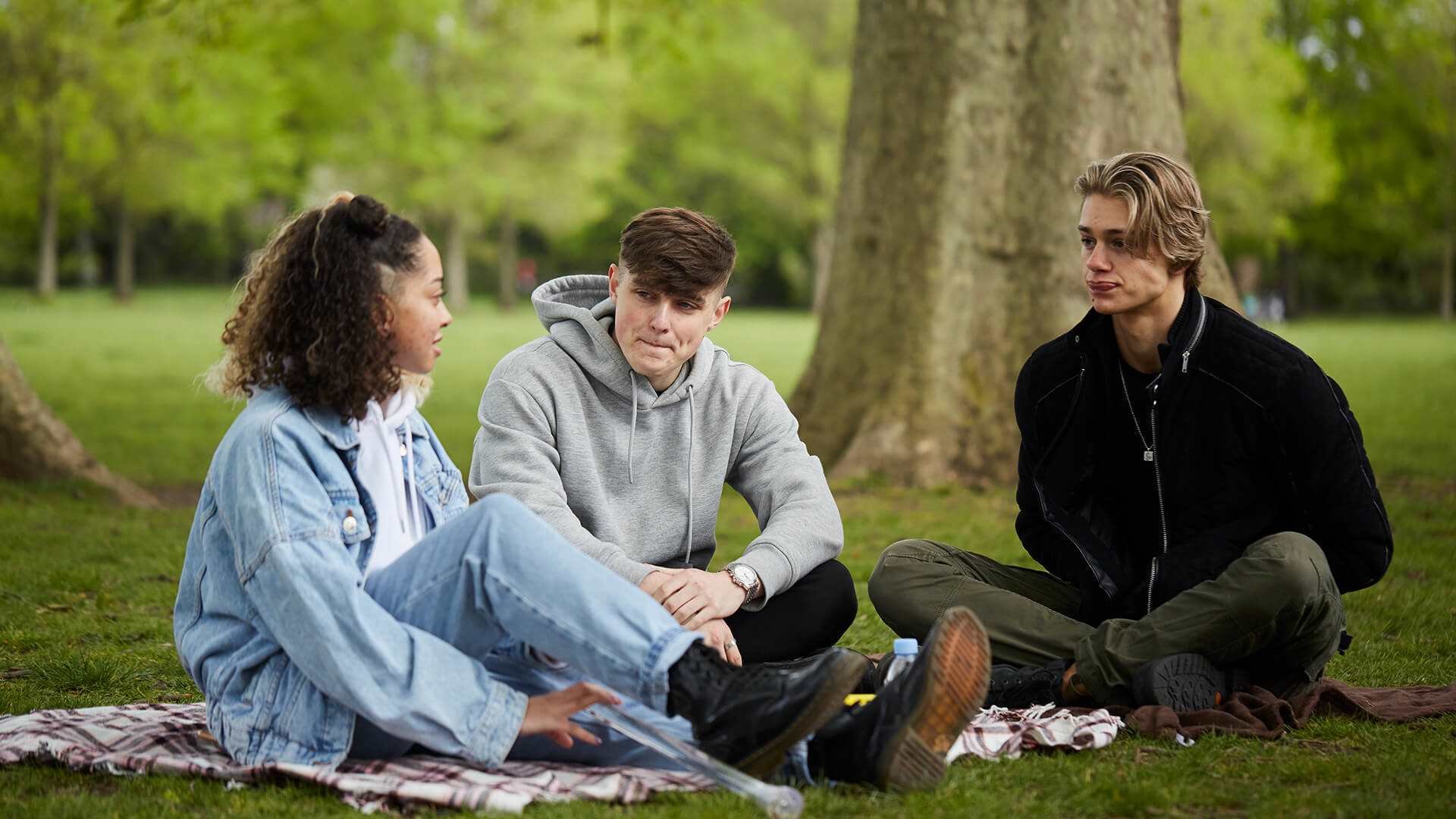Some anime hit harder than others. This list counts down from #25 to #1, putting a spotlight on stories that leave a lasting ache. Each pick earns its place for how well it handles grief, loss and healing, not just for shock value.
You will find films and series across decades and genres. War tales, romances, coming of age and dark fantasy all show up here. The aim is to highlight what makes each title’s sadness feel earned and why these moments stick. Expect mentions of themes and scenes, with light spoilers kept to a minimum.
#25. Wolf Children
In Wolf Children, a young mother raises two kids who are half wolf after their father dies. The film is tender about single parenthood and the quiet cost of choosing a path for your child. The sadness sits in the daily tradeoffs and the lonely strength it takes to keep going, which feels true rather than staged.
What hurts most is the slow drift as the siblings pick different futures. The movie respects growing up as both gain and loss and it honors a parent’s role in letting go. Winters, empty rooms and nature’s cycles carry the weight without big speeches.
By the end, you feel the mother’s pride and ache at once. The film treats love as labor and the tears come from that quiet, earned dignity.
#24. Colorful
Colorful opens with a soul given a second chance in the body of a boy who died by suicide. It faces shame, bullying and family strain without preaching. The sadness lands because the film shows how small hurts stack up until they feel like a wall.
The protagonist must confront both his own past and the boy’s life he now lives. Each reveal reshapes your view of blame and regret. The film treats kindness as work, not magic and it gives weight to small, human choices.
Hope exists, but it is fragile. The final stretch suggests recovery is not a straight line, which makes the modest steps feel brave rather than neat.
It is a rare story that captures how guilt and mercy can share the same space. That mix is what makes Colorful linger.
#23. The Wind Rises
Hayao Miyazaki’s The Wind Rises follows Jiro Horikoshi, a designer who loves planes, as his work is pulled into war. It is a sad film about talent and consequences. The dream of flight meets the reality that those wings will carry bombs, which adds a quiet, moral weight.
Jiro’s romance with Naoko adds another layer. Her illness and their brief time together bring simple, domestic pain into a grand historical story. The film lets craft, love and loss sit together without tidy answers, which gives its final images a heavy calm.
The line between beauty and harm stays blurry. That is the hurt at the center of this bittersweet biography.
#22. Erased
In Erased, Satoru is thrown back to his childhood to stop a classmate’s murder. The sadness comes from kids living with fear that adults ignored the first time. The show treats trust as careful work, built scene by scene in winter light.
When Satoru reaches out, the small acts matter most. Sharing food, walking home, staying to listen. These moments push against years of silence and the show never forgets how risky that feels for a child. The tension adds weight to each choice.
Even when justice arrives, the lost time cannot be returned. The ending offers warmth but admits some scars never leave, which makes the relief feel honest.
It is a thriller on paper, but it lands as a story about seeing someone fully. That sight is what saves lives.
#21. Banana Fish
Banana Fish is a crime drama about Ash Lynx, a young gang leader and Eiji, whose bond becomes his lifeline. The show pairs brutal violence with scenes of real tenderness and that contrast makes the heartbreak sting.
Trauma is not treated as flavor. It shapes how Ash moves, trusts and hopes. The moments where he lets his guard down feel huge because they cost him so much. The city setting never stops pressing in, which keeps the danger present.
The finale is famous for a reason. It is both inevitable and unfair and it honors how love can change a life even if time runs out. That mix is what makes Banana Fish endure.
#20. Angel Beats
Angel Beats takes place in a school-like afterlife where teens work through regrets. It starts playful, then turns the knife as you learn what each person carried. The tonal shift makes the late episodes hit much harder.
The show argues that even brief connections matter. Music scenes, lunch on the roof and quiet apologies become the core. The goodbye sequence is simple but crushing because it treats acceptance as kindness to yourself and your friends.
Some parts are messy, but the heart is clear. The last looks and shared promises give this comedy-drama its tears.
In the end, moving on is not forgetting. It is saying thank you, which is the show’s truth.
That gratitude is why the final handshake stays with so many viewers.
#19. 5 Centimeters per Second
Makoto Shinkai’s 5 Centimeters per Second is about distance that keeps growing. Trains, snow and missed chances stack up until the connection thins to a thread. The sadness is quiet and feels ordinary, which makes it sting.
Each chapter shows how life moves even when love stalls. Careers, new cities and habits take over. There is no villain here, just time and drift. The final scene is notorious for how little it gives and that restraint is the point.
Few films capture the ache of almost. This one does, with images that make the pause between people feel endless.
#18. Hotarubi no Mori e
In Hotarubi no Mori e, a girl befriends a forest spirit she can never touch. The rule is simple and cruel. Summer after summer, they circle closeness without crossing it, which turns small gestures into treasures.
The film is short, but it treats each meeting like a gift. The final choice is swift and devastating, not because it shocks, but because it feels fated by the story’s one law.
It is a gentle tale that leaves a mark. The sadness is clean, carried by wind, cicadas and the space between two hands.
That light touch is why it lingers far longer than its brief runtime.
#17. Now and Then, Here and There
Now and Then, Here and There drops a cheerful boy into a war-torn world and never flinches. It shows child soldiers, scarcity and the cost of power. The bleak setting is not spectacle. It exists to make you look.
The show’s rare bright spots come from stubborn kindness. A shared drink, a protective lie, a refusal to give in. These choices are small, but they are the only things that push back against a brutal system.
By the end, the hope feels carved from rock. It is not sweet, but it is real and that makes the pain worth witnessing.
#16. Puella Magi Madoka Magica
Madoka Magica starts cute and then reveals the trap. Wishes have a price and friendship cannot shield you from despair. The show turns genre rules into a warning about deals you do not understand.
Character fates hit because they are tied to specific hopes. Every fall carries the echo of an earlier promise. The art and music sell that shift, pulling you into a cycle that feels inescapable.
The final episodes reframe everything with a sacrifice that is both victory and loss. It closes the loop while leaving a residue of grief that fans still debate.
It earns its tears by making every choice matter inside a harsh, logical system.
#15. Plastic Memories
In Plastic Memories, androids called Giftia have fixed lifespans. A retrieval team collects them before breakdown. The premise bakes in a countdown, so even quiet days carry weight.
The show focuses on relationships built under a clock. Dates, work shifts and small routines take on meaning because time is short. The sadness lands when characters try to make normal memories knowing the end is scheduled.
The finale accepts that endings do not erase what came before. That view makes the earlier joy feel braver, not foolish.
#14. Tokyo Magnitude 8.0
Tokyo Magnitude 8.0 follows two siblings after a massive quake. The show is grounded, careful with details and serious about the strain on bodies and minds. The sadness comes from how disaster reshapes ordinary life.
Their journey across the city highlights strangers who help and those who cannot. The series avoids melodrama until a late reveal that recontextualizes earlier scenes with sharp force. It does not feel cheap because the clues were there.
By the end, the focus is on resilience and memory. What you carry forward matters and the city’s scars match the ones people keep.
It is tough viewing at times, but the honesty gives its tears weight.
#13. March Comes in Like a Lion
March Comes in Like a Lion follows Rei, a young shogi pro dealing with depression and loneliness. The show balances gentle comedy with real pain and it treats recovery as slow and uneven.
The Kawamoto sisters give Rei a home base he did not know he needed. Meals, holidays and teasing become anchors that steady him. The series is careful about bullying and self-worth, making each small step feel earned.
Victories at the board matter, but the heart is in quiet scenes at the table and walks by the river. It is a story about finding a life that fits, which makes the emotion stick.
The warmth does not erase the darkness. It teaches you how to hold both without dropping either.
#12. Your Name
Your Name blends body-swapping romance with a disaster plot that tests memory and fate. The sadness sits in near misses and names that will not come. The film turns everyday objects into lifelines.
Shinkai’s style makes sky, strings and city lights do emotional heavy lifting. The timeline twists amplify longing without losing clarity. When the film withholds a reunion, it does so to make the final beat feel earned.
It is less tragic than others here, but the ache of almost losing someone forever puts it on any tearjerker list.
That balance of spectacle and intimacy is what people remember most about this film.
#11. Fruits Basket
Fruits Basket hides heavy trauma inside a story about a cursed family. Abuse, grief and self-loathing are handled with care and the show spends time letting people unlearn what hurt them. The sadness often comes from gentle admissions.
Tohru’s kindness is not naive. It is patient work that changes the tone of a home. The payoffs arrive slowly, with characters earning peace piece by piece. When long-held fears break, the release can be overwhelming.
The final arcs bring closure that respects how recovery looks different for everyone. It is a soft story with serious bones.
Also Read
10 phrases that sound supportive but are actually a subtle sign of manipulation
Healing here is not a miracle. It is a practice and that makes the joy feel real.
#10. Violet Evergarden
War left Violet Evergarden without a purpose and with hands that do not feel like her own. As a letter writer, she learns to voice feelings she cannot yet name. The sadness is in the gap between what she was trained to be and who she might become.
Standalone episodes hit hard. A mother writing to a child, a playwright finding words, a soldier reaching home too late. The show treats language as a bridge that saves what time tries to erase. The music and light make every letter feel sacred.
By the end, Violet’s growth does not cancel her losses. It gives them shape, which is why this series is a top-tier cry.
Also Read
10 Phrases That Sound Supportive But Are Actually a Subtle Sign of Manipulation
#9. Made in Abyss
Made in Abyss pairs cute designs with one of the darkest adventures in recent memory. The Abyss punishes curiosity at every level and the cost rarely feels fair. That clash makes the pain shocking.
The show works because it treats survival as problem solving, not plot armor. Injuries have consequences. Choices haunt. When help arrives, it often comes with a price that leaves new scars. The beauty of the world makes the horror worse.
It is not sadness for its own sake. It is a study of what people trade away to keep moving down. That trade is the series’ core.
Approach with care. The bleakness is intentional and often devastating.
Also Read
People With Low Emotional Intelligence Often Miss These 6 Social Cues
Still, the bond between the leads gives the story its thin line of hope.
#8. To Your Eternity
In To Your Eternity, an immortal being learns by forming bonds and losing them. Each arc ends with a farewell that teaches something new about love, family and place. The structure guarantees grief, yet it never feels cheap.
The early episodes set the tone with a simple, crushing goodbye in a frozen land. Later arcs expand the world but keep the focus on how memories shape identity. Every loss adds to who the immortal becomes, which makes the tears feel purposeful.
It is a loop of meeting, caring and parting. That loop is both the curse and the gift at the heart of this series.
Also Read
8 Weird Habits You Don’t Realize You Have From Growing Up In A “We Can’t Afford It” Household
#7. I Want to Eat Your Pancreas
Despite the title, I Want to Eat Your Pancreas is a tender teen romance about a boy and a girl with a terminal illness. It avoids melodrama by focusing on small days that feel borrowed.
The leads push each other to live a little wider. Reading lists, trips and shared jokes carry real weight because time is short. The ending goes a different way than many expect, which makes the grief feel messy and real.
It argues that knowing the end can make the middle matter more. That idea powers the film’s most painful scene.
The last note is quiet, which fits the story’s focus on ordinary joy and loss.
Also Read
10 Phrases That Sound Supportive But Are Actually A Subtle Sign Of Manipulation
#6. Your Lie in April
Your Lie in April is about a pianist who stopped playing and the violinist who pulls him back. Music performances double as therapy sessions where grief and guilt surface. The show is open about how art can hurt and heal.
Flashbacks reveal why the piano became a source of fear. The slow return to the bench is paced well and the concert scenes feel like battles. Letters and final recitals bring everything to a head with clarity.
The finale is a classic tearjerker because it treats goodbye as a gift. That framing lets love remain even as the stage goes quiet.
It is sentimental, but the emotions ring true.
Also Read
8 Cringey Phrases Older Relatives Use at Family Dinners That Younger Guests Dread
The soundtrack carries half the story, making each pause feel loaded.
#5. A Silent Voice
Naoko Yamada’s A Silent Voice follows a former bully seeking to make amends with a deaf classmate. It looks closely at shame, isolation and the hard work of reaching out again. The sadness comes from how long it takes to forgive yourself.
The film treats sign language and silence with care. Group scenes capture how social anxiety snowballs and the visuals show how a person can feel erased in a crowd. When apologies land, they do so with weight earned over years.
The ending is hopeful without pretending the past vanishes. It argues for connection as a daily practice, which is why the final shots feel healing.







